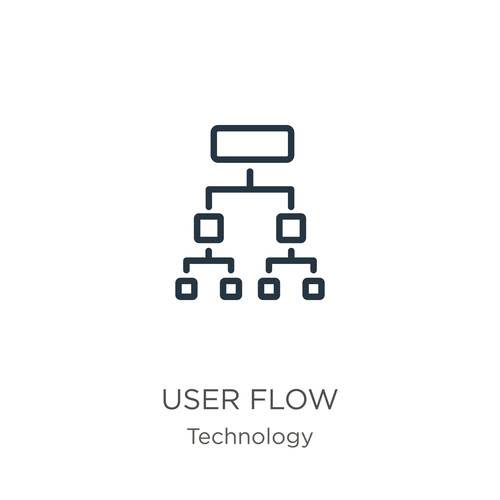I will just create a new product and make a request to query all the existing products as well. In the Startup/ConfigureServices of the API project, add these lines to register the Versioning. I have written a detailed article on API Versioning in ASP.NET Core 3.1 WebApi.

We will explain why this is important in the next section. Domain-driven design (DDD) is an approach to developing software for complex needs by deeply connecting the implementation to an evolving model of the core business concepts. With onion architecture, there is only an object model at the lowest level, which does not depend on the type of database. The actual type of database and the way of storing data is determined at the upper infrastructure level.
A framework for giving feedback to others’ code
We will implement the Mediator pattern later in this tutorial. Next, let’s go to the Infrastructure Folder and add a layer for Database, (EFCore). We will start off by creating a Blank Solution on Visual Studio. PS, I use Visual Studio 2019 Comunity which is completely FREE. Domain and Application Layer will be at the center of the design.

You should be able to easily test your domain logic.Then, we should start thinking about separating different concerns into different units of code. At the center part of the Onion Architecture, the domain layer exists; this layer represents the business and behavior objects. The idea is to have all of your domain objects at this core. Besides the domain objects, you also could have domain interfaces.
How we observe, monitor and improve the operational performance of our applications
Onion architecture implements this concept and dramatically increases code quality, reduces complexity and enables evolutionary enterprise systems. Naturally, maybe you want to start the development by the database, but it’s a mistake! The Infrastructure Layer is the outermost layer of the Onion Architecture. It can receive objects that implement some known interfaces (dependency injection), and it’s allowed to import entities from the Domain Layer.

This layer is used to communicate with the presentation and repository layer. The service layer holds all the business logic of the entity. In this layer services interfaces are kept separate from their implementation for loose coupling and separation of concerns. We will add the interfaces onion architecture that consist of the data access pattern for reading and writing operations with the database. In the very center we see the Domain Model, which represents the state and behavior combination that models truth for the organization. Around the Domain Model are other layers with more behavior.
Language and framework independent
We can also use dependency injection frameworks, like Spring, to connect interfaces with implementation at runtime. Repositories used in the domain and external services used in Application Services are implemented at the infrastructure layer. The domain layer lies in the heart of the https://www.globalcloudteam.com/, representing the business and behavioral objects.

Using contracts allows each layer to set its expectations onto the next and couples it to only what it requires to be. In this layer is where the majority of our business logic lives, it carries out the operations to turn A into B, input into output, egg into chicken. It achieves this through interacting with the final layer, the Domain Model layer which is the representation of the high level data objects we use. The Onion Architecture relies heavily on the Dependency Inversion principle. The presentation layer is the default Asp.net core web API project Now we need to add the project references of all the layers as we did before.
Common Software Architectural Patterns in a nutshell
The three outer layers are those which are not directly related to our business logic but depend upon on it fulfil their own purpose. They can change often and thus are separate from our core application logic. Using this approach, we can encapsulate all of the rich business logic in the Domain and Service layers without ever having to know any implementation details.
The database context class is used to maintain the session with the underlying database using which you can perform the CRUD operation. First, you need to create the Asp.net Core web API project using visual studio. After creating the project, we will add our layer to the project. After adding all the layers our project structure will look like this. We have connected all of our Onion architecture implementation layers, and our application is now ready for use. We’ve shown you how to implement the Domain layer, Service layer, and Infrastructure layer.
Cumbersome when you don’t have many business rules
That way, we won’t need to have PostgreSQL installed on our system. This line of code will find all of the controllers inside of the Presentation project and configure them with the framework. They are going to be treated the same as if they were defined conventionally. To learn how to implement the repository pattern with Entity Framework Core you can check out this article ASP.NET Core Web API – Repository Pattern. The flow of dependencies dictates what a certain layer in the Onion architecture can do.
- Onion architecture is also applicable to microservices when viewing each microservice in isolation.
- Externalizing the database can be quite a change for some people used to thinking about applications as “database applications”.
- Instead of each module being responsible of instantiating it’s own dependencies, it has its dependencies injected during it’s initialization.
- By doing this, your Infrastructure code can expect to receive an object that implements an interface, and the main can create the clients and pass them to the infrastructure.
- They can change often and thus are separate from our core application logic.
However, there are still a couple of things to take care of. But how are we going to use the controller if it is not in the Web application? Great, we have seen how to implement the Presentation layer. If you’re interested in learning more about how to implement global exception handling, be sure to take a look at Global Error Handling in ASP.NET Core Web API. Now, let’s look at some of the custom exceptions that we have inside the Exceptions folder.
Separation of concerns
They are NOT typically CRUD services and are usually standalone services. Most of the traditional architectures raise fundamental issues of tight coupling and separation of concerns. Onion Architecture was introduced by Jeffrey Palermo to provide a better way to build applications in perspective of better testability, maintainability, and dependability. Onion Architecture addresses the challenges faced with 3-tier and n-tier architectures, and to provide a solution for common problems.